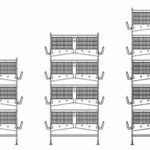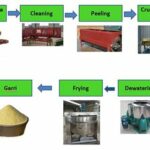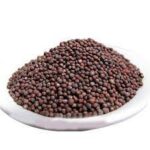The Best Tractors for Efficient and Effective Farming Operations
Afrimash Secures USAID Funds To Support Food Security in Nigeria
3rd All Africa Horticultural Congress
7 – 12 August 2016. This Congress was hosted by the Nigerian Society for Horticultural Sciences and took place under the aegis of the International Society for Horticultural Science (ISHS).
The third AAHC follows the first and second held earlier in Kenya and South Africa, respectively. It is designed to cater to the diverse needs of the science, industry/business and capacity building sectors of the horticulture industry. There’s something for you during this congress whether you are a hobby horticulturist or a professional, so you cannot afford to miss it. Students are welcome too. It will feature symposia, an exhibition, field trips, brokerage of new business partnerships, a photo competition, and social events; all carefully put together to express the various perspectives of the theme ‘Horticulture for improved livelihoods’.
PAEPARD made a presentation related to the Importance of partnership platforms to meet the needs of horticultural enterprises: Lessons learned from international to national scales.
PROPAC attended the Side Event 3 organised by FAO on Urban Horticulture (see also below: related PAEPARD blog post)
Senegal will be hosting the 4th ALL AFRICA HORTICULTURE CONGRESS – 2020
Related PAEPARD blogpost:
February 18, 2013FIRST STATUS REPORT ON URBAN AND PERI-URBAN HORTICULTURE IN AFRICA.
© FAO 2012, 116 pages.
This report draws the attention of policymakers to urban and peri-urban horticulture, and how it can help to grow greener cities in Africa. Production of fruit and vegetables in and around urban areas has a clear comparative advantage over rural and other sources in supplying urban residents with fresh, nutritious – but highly perishable – produce all year round. It generates local employment, reduces food transport costs and pollution, creates urban green belts, and recycles urban waste as a productive resource.
Related:
The Horticulture Innovation Lab is offering a grant up to $750,000 over three years to support a research project in integrated animal-horticulture systems. Sept. 19 is the deadline for brief concept notes, submitted by U.S. university researchers. Read the whole article about this
The research should be focused on the needs of smallholder farmers in developing countries that are part of Feed the Future, with priority given to Cambodia, Nepal and Rwanda. Understanding the socioeconomic feasibility and trade-offs involved in mixed crop-livestock farming systems — ones that specifically incorporate fruit and vegetable crops — is the focus of this new call for concept notes. Read the whole article for additional details.
Additional OPPORTUNITIES:
- DEVELOPMENT COMPETITION: OFF-GRID REFRIGERATION The Global LEAP Awards is seeking information and feedback to shape its upcoming Off-Grid Refrigeration Competition, which will begin in September: http://bit.ly/2b1cuoP
- GRANT: DRIED APRICOTS HANDLING, MARKETING Sept. 12 is the deadline to apply for a $300,000 grant from the Horticulture Innovation Lab focused on the needs of growers in Burkina Faso: http://bit.ly/2b1dFVc
- GRANT: TOMATO POSTHARVEST RESEARCH Sept. 12 is also the deadline for proposals from U.S. researchers focused on the needs of growers in Burkina Faso, for up to $300,000 from the Horticulture Innovation Lab: http://bit.ly/2aGF2lh
- HORTICULTURE INNOVATION LAB
- University of California, Davis, with funding from the U.S. Agency for International Development as part of Feed the Future, the U.S. government’s global hunger and food security initiative.
Nigeria Rice Imports Average 1.5m Tonnes Annually
Investigations have revealed that between 2003 and 2013, Nigeria may have imported rice to the tune of 17,206,077 tonnes with an average import at 1,564,188 million, NaijaAgroNet can authoritatively report.
… Linking agrobiz, sustainable environs, people & technology
Pic: A graphic table of Nigeria’s rice import between 2003 and 2013

















